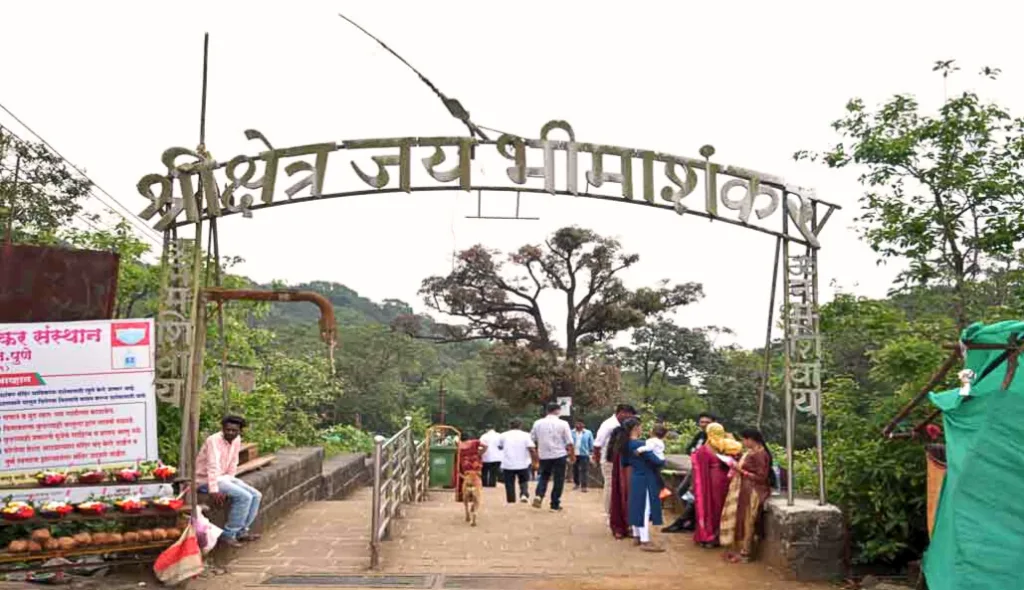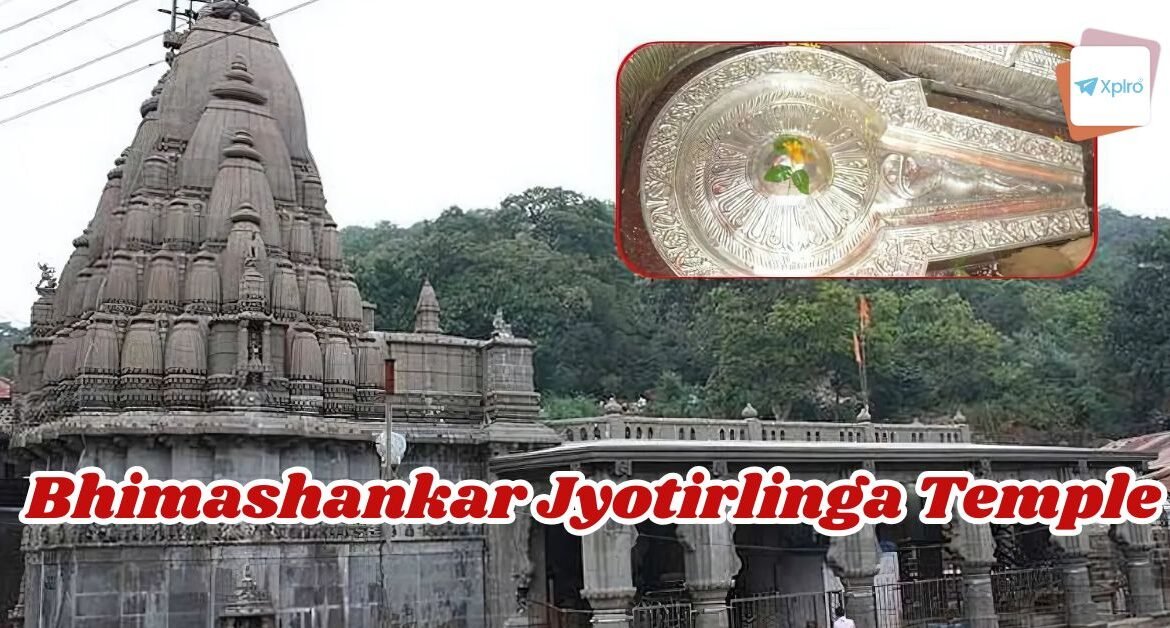This ancient shrine is not just a place of worship but a doorway to profound peace and spiritual empowerment. The phrase “A Sacred Journey” highlights the transformative experience that pilgrims and travelers undertake, emphasizing that a visit to Bhimashankar is both a personal and spiritual awakening. The combination of “Peace & Power” suggests that the temple offers a dual experience—calm and serenity for the soul, coupled with the spiritual strength that devotees draw from the sacred Jyotirlinga. This title, rich in positive sentiment and curiosity, positions the blog as a captivating guide to exploring the temple’s wonders while providing a deeply meaningful pilgrimage.
- Introduction to Bhimashankar Jyotirlinga Temple
- 1. Bhimashankar Jyotirlinga Temple: A Brief History
- 2. The Legend of Bhimashankar Jyotirlinga
- 3. Spiritual Significance of Bhimashankar Jyotirlinga Temple
- 4. Bhimashankar Wildlife Sanctuary
- 5. How to Reach Bhimashankar Jyotirlinga Temple
- 6. Best Time to Visit Bhimashankar Jyotirlinga Temple
- 7. Accommodation and Facilities near Bhimashankar Jyotirlinga Temple
- 8. Bhimashankar Jyotirlinga Temple Trekking Experience
Introduction to Bhimashankar Jyotirlinga Temple

Nestled in the picturesque Sahyadri Hills of Maharashtra, the Bhimashankar Jyotirlinga Temple is one of the twelve sacred Jyotirlingas of Lord Shiva. This ancient temple is not just a religious site but a serene escape for pilgrims and nature lovers alike. Its spiritual significance and the enchanting landscape surrounding the temple make it a must-visit destination. Whether you’re seeking inner peace, adventure, or a divine experience, Bhimashankar Jyotirlinga Temple offers an unforgettable blend of spirituality and nature.
In this comprehensive guide, we will uncover the history, legends, attractions, and everything you need to know about visiting the Bhimashankar Jyotirlinga Temple.
Bhimashankar Jyotirlinga Temple at a Glance
| Details | Information |
|---|---|
| Location | Sahyadri Hills, Pune District, Maharashtra |
| Nearest Airport | Pune International Airport (125 km) |
| Nearest Railway Station | Pune Railway Station (100 km) |
| Best Time to Visit | October to March |
| Significance | One of the 12 Jyotirlingas of Lord Shiva |
| Special Festivals | Maha Shivratri |
| Main Attractions | Temple, Bhimashankar Wildlife Sanctuary |
| Famous For | Spirituality, Nature, Trekking |
Also Read: Unveiling Maharashtra’s Marvels with Xplro
1. Bhimashankar Jyotirlinga Temple: A Brief History

The Bhimashankar Temple is one of the 12 Jyotirlingas—sacred shrines where Lord Shiva is said to have manifested himself. Built in the 13th century, the temple follows the Nagara style of architecture and features beautiful stone carvings, mythological sculptures, and a divine ambience.
It is believed that even before the temple was built, the place held great significance as mentioned in the ancient text, Shiva Purana.
Quick Fact: The sanctum houses a self-manifested Shivling (Swayambhu), making it even more powerful for spiritual seekers.
2. The Legend of Bhimashankar Jyotirlinga

According to legend, Bhima, the son of Kumbhakarna (Ravana’s brother), terrorized the earth and heavens. To stop him, Lord Shiva appeared and defeated Bhima in a fierce battle. After the battle, Lord Shiva revealed himself as a Jyotirlinga at Bhimashankar, blessing the land forever.
This myth gives the temple its deep spiritual meaning and connects every devotee to a tale of divine justice and power.
3. Spiritual Significance of Bhimashankar Jyotirlinga Temple
The temple is not just a historic site but a powerful center of faith. Devotees believe that praying here brings peace, prosperity, and freedom from karma.
Especially during Maha Shivratri, thousands of devotees gather to perform rituals and seek blessings. Many believe that a visit to Bhimashankar can even help achieve moksha—liberation from the cycle of rebirth.
4. Bhimashankar Wildlife Sanctuary
Surrounding the temple is the lush Bhimashankar Wildlife Sanctuary, perfect for those who love nature and wildlife. The area is home to:

The rare Giant Indian Squirrel (Shekru) – Maharashtra’s state animal
Evergreen forests and scenic rivers
A variety of birds, plants, and insects
If you’re planning a spiritual trip, add a visit to the sanctuary—it offers an ideal mix of serenity and adventure.
5. How to Reach Bhimashankar Jyotirlinga Temple
Here’s a quick guide to reach the temple from major cities:
| Mode of Transport | Nearest Location | Distance |
|---|---|---|
| By Air | Pune International Airport | ~125 km |
| By Train | Pune Railway Station | ~100 km |
| By Road | Pune / Mumbai / Nashik | Well connected |
Travel Tip: The road journey through the Western Ghats is scenic, especially during winter and monsoon months. Taxis, buses, and self-drives are easily available.
6. Best Time to Visit Bhimashankar Jyotirlinga Temple
The ideal time to visit is from October to March when the weather is cool and pleasant. Avoid peak monsoon (June–September) as the region receives heavy rainfall, making the roads and trekking paths slippery.
| Season | Experience |
|---|---|
| October–March | Best for temple visit and sanctuary trekking |
| April–June | Hot and humid; less ideal for trekking |
| July–September | Lush greenery, but risky due to heavy rains |
Festival Highlight: Plan your trip around Maha Shivratri for a spiritually charged experience.
7. Accommodation and Facilities near Bhimashankar Jyotirlinga Temple
There are plenty of stay options near the temple, depending on your comfort and budget:
- Pilgrim Guesthouses: Affordable, clean, and close to the temple. Ideal for spiritual travelers.
- Hotels & Eco-Resorts: Located nearby towns, offering better amenities like A/C, hot water, and guided tours.
- Camping Options: For adventure lovers, camping near the sanctuary is a great experience under the stars.
Xplro Tip: Book your accommodation in advance, especially during festivals, to avoid last-minute rush.
8. Bhimashankar Jyotirlinga Temple Trekking Experience
If you’re someone who loves trekking and spirituality, Bhimashankar offers two popular routes:
| Trek Route | Difficulty | Highlights |
|---|---|---|
| Ganesh Ghat | Easy to moderate | Waterfalls, forest trails, beginner-friendly |
| Sidhi Ghat | Challenging | Steep climbs, scenic views, for experienced trekkers |
The treks pass through dense forests, valleys, and small streams, giving you a chance to connect with nature and your inner self.
Final Thoughts Bhimashankar Jyotirlinga Temple
A visit to the Bhimashankar Jyotirlinga Temple is more than just a pilgrimage—it’s a soulful journey into the heart of spirituality, nature, and heritage. From the temple’s divine energy to the lush surroundings of the wildlife sanctuary and the thrill of trekking through the Sahyadris, Bhimashankar offers something for every kind of traveler. Whether you’re seeking blessings, adventure, or peace of mind, this sacred destination delivers an unforgettable experience. At Xplro.com, we aim to guide you through such meaningful journeys across India—helping you explore with confidence, connect with culture, and make every trip truly special.
FAQs
1. Why is Bhimashankar Jyotirlinga Temple considered sacred?
- Bhimashankar is one of the twelve Jyotirlingas, highly revered shrines where Lord Shiva is believed to have appeared in a divine form. It holds deep spiritual importance for Shiva devotees across India.
2. In which state is Bhimashankar Temple located?
- The temple is situated in Maharashtra, within the Pune district. It lies in the midst of the scenic Sahyadri hills, also known as the Western Ghats.
3. When is the best season to visit Bhimashankar?
- The most comfortable time to plan your visit is between October and March. During these months, the climate is pleasant and ideal for sightseeing, temple visits, and trekking.
4. Is it necessary to trek to reach the Bhimashankar temple?
- No, trekking is optional. There is a motorable road that leads directly to the temple. However, adventure lovers can choose to trek through routes like Ganesh Ghat or Sidhi Ghat.
5. Are senior citizens able to visit the temple easily?
- Yes, seniors can comfortably reach the temple via road. The temple premises are accessible, though it is advised to avoid trekking routes if mobility is a concern.
6. What kind of stays are available near the temple?
- Visitors can find a variety of options—from pilgrim guesthouses with basic facilities to eco-resorts and budget hotels in nearby towns. Camping is also available for nature lovers.
7. What are the usual timings of the Bhimashankar temple?
- The temple typically opens around 4:30 AM for early morning aarti and closes by 9:30 PM. Rituals and darshan continue throughout the day.
8. Can visitors take photos inside the temple?
- Photography is generally not allowed inside the main sanctum. It’s best to follow the temple rules and respect local customs.
9. Is there any dress code for entering the temple?
- While there’s no formal dress code, visitors are encouraged to wear modest and traditional attire as a mark of respect in this holy space.
10. Are food and water facilities available nearby?
- Yes, there are small eateries and tea stalls near the temple that serve simple vegetarian meals, snacks, and bottled water.
11. Is it safe for solo travelers and women to visit Bhimashankar?
- Yes, Bhimashankar is generally safe for solo trips. Many women and individual travelers visit throughout the year. Basic safety precautions should still be followed.
12. How can I plan my Bhimashankar trip with ease?
- You can explore detailed travel guides, stay suggestions, and trekking tips on Xplro.com—your one-stop platform for curated travel experiences across India.






